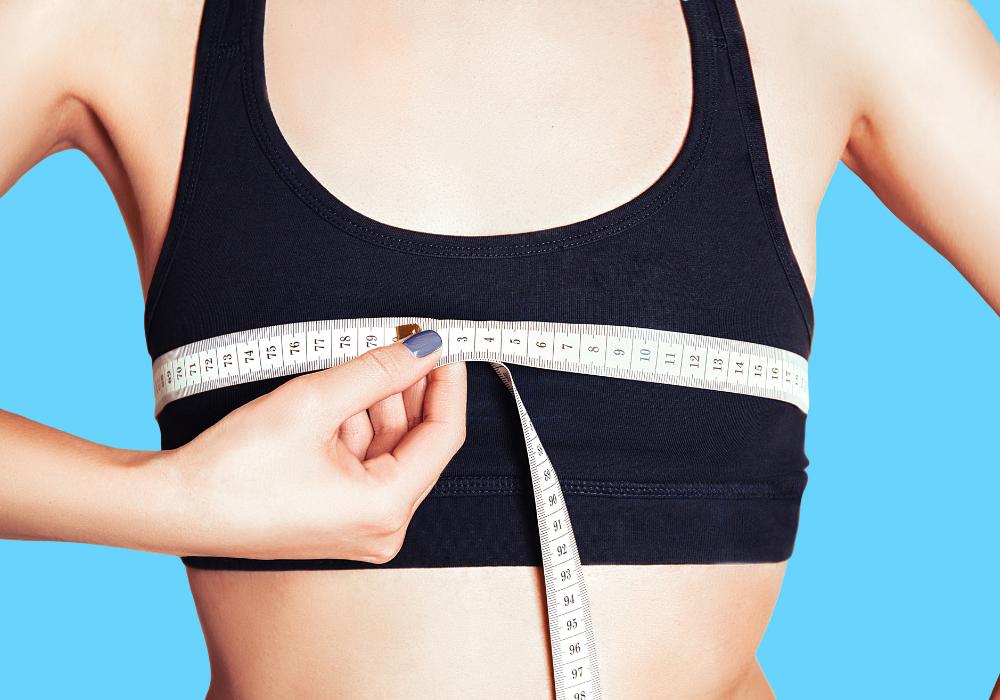Finding the right bra can feel like a daunting task. But don’t worry, we’re here to help! This guide will walk you through everything you need to know to find your perfect bra size and style. Let’s dive in!
Why a Good Bra Fit Matters
A well-fitted bra is the foundation of any great outfit. It not only provides support but also enhances your overall silhouette (Harper’s Bazaar). Wearing the wrong size can lead to discomfort, back pain, and even skin irritation (Journal of Textile and Apparel, Technology and Management). So, it’s crucial to get it right.
How to Measure Your Bra Size
Step 1: Measure Your Band Size
- Get a Measuring Tape: Use a soft measuring tape.
- Measure Under Your Bust: Wrap the tape around your ribcage, just under your bust. Make sure it’s snug but not too tight.
- Round to the Nearest Whole Number: If you get an odd number, round up to the nearest even number. This is your band size.
Step 2: Measure Your Bust Size
- Measure Around the Fullest Part of Your Bust: Keep the tape level and not too tight.
- Round to the Nearest Whole Number: This is your bust measurement.
Step 3: Calculate Your Cup Size
- Subtract Your Band Size from Your Bust Measurement: The difference will give you your cup size.
- 1 inch = A cup
- 2 inches = B cup
- 3 inches = C cup
- And so on…
For example, if your band size is 34 and your bust size is 37, the difference is 3 inches, making you a 34C.
Common Bra Styles and Their Benefits
T-Shirt Bra
- Best For: Everyday wear
- Benefits: Smooth and seamless, perfect under tight clothing.
Push-Up Bra
- Best For: Adding volume
- Benefits: Lifts and enhances cleavage.
Sports Bra
- Best For: Exercise
- Benefits: Provides maximum support and minimizes movement.
Bralette
- Best For: Comfort
- Benefits: No underwire, great for lounging.
Strapless Bra
- Best For: Off-shoulder outfits
- Benefits: Stays in place without straps.
Understanding Your Breast Shape
Understanding your breast shape is just as important as knowing your band and cup size (Glamour). Different styles work better for different shapes. Here are a few common shapes:
Round
- Best Styles: Balconette, T-shirt bras
Teardrop
- Best Styles: Plunge, push-up bras
Asymmetrical
- Best Styles: Bras with removable padding
East-West
- Best Styles: T-shirt, contour bras
Tips for a Perfect Fit
- Check the Band: It should be snug but not too tight. You should be able to fit two fingers under the band.
- Adjust the Straps: They should provide support without digging into your shoulders.
- Look at the Cups: They should fully encase your breasts without any spillage.
- Move Around: Raise your arms, bend over, and twist. Your bra should stay in place.
Personal Anecdote: My Bra Fitting Experience
I remember my first professional bra fitting. I was nervous but excited. The fitter was kind and made me feel comfortable. She measured me and brought in several styles to try. I was amazed at how different I felt in a properly fitted bra. My posture improved, and I felt more confident. It was a game-changer!
The Importance of Professional Fittings
Most women are wearing the wrong bra size (The Huffington Post). A proper fitting can change your posture, your comfort level, and even your confidence. Many stores offer free fittings, so take advantage of this service.
Online Bra Fitting Tools
With the rise of online shopping, many brands now offer virtual fitting tools. These tools use algorithms to recommend the best size and style for you, making online bra shopping easier and more accurate. For a clear explanation of how bra sizing works, you can visit Uplifted Lingerie, which provides a helpful guide on bra sizes and how to measure yourself correctly. While virtual tools aren’t always as precise as in-person fittings, they can be a great starting point.
Caring for Your Bras
- Hand Wash: Use a gentle detergent and cold water.
- Air Dry: Lay flat to dry. Avoid the dryer as it can damage the elastic.
- Rotate Your Bras: Don’t wear the same bra two days in a row. Give it time to regain its shape.
Conclusion
Finding the perfect bra size and style can make a world of difference in how you feel about yourself (Forbes). It’s not just about size; it’s about finding a style that complements your body shape and lifestyle. So, take the time to measure yourself, try different styles, and don’t be afraid to seek professional help. Your perfect bra is out there waiting for you!
References
- Harper’s Bazaar
- Forbes
- The Huffington Post
- Glamour
- Journal of Textile and Apparel, Technology and Management
- Market Research Future
By following this guide, you’ll be well on your way to finding a bra that fits perfectly and makes you feel amazing. Happy bra shopping!

